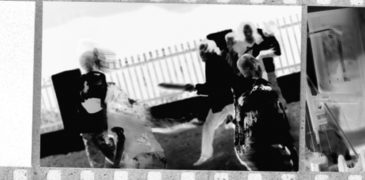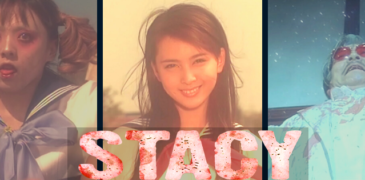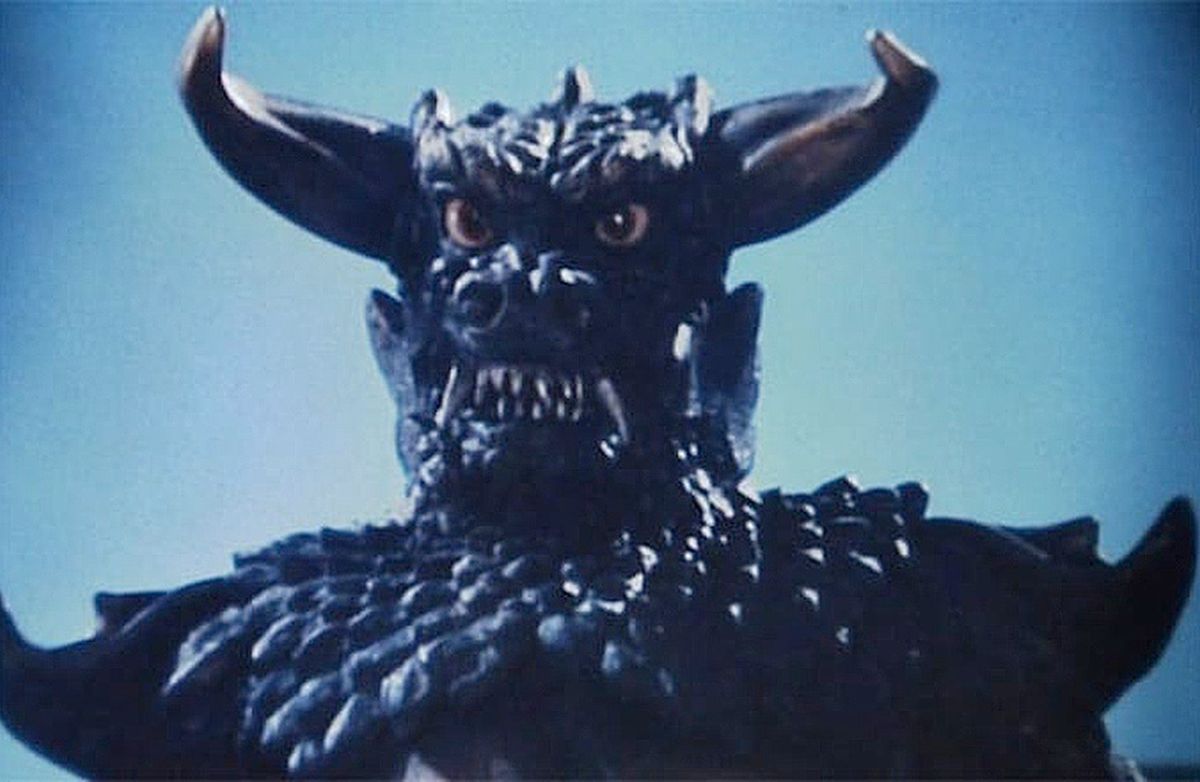
Since the division of Korea into two separate countries in 1948, North Korea have used its cinema to spread propaganda for their “Juche” or self-reliant ideology to the masses in the guise of entertainment, some of which are more controversial than others.
Today we are looking at the lesser-known Kaiju film, Pulgasari, released in North Korea in 1985, directed by South Korean director Shin Sang-ok who is known for other works such as A Flower in Hell (Jiokhwa, 1958) and The Red Scarf (Balgan mahura, 1964).
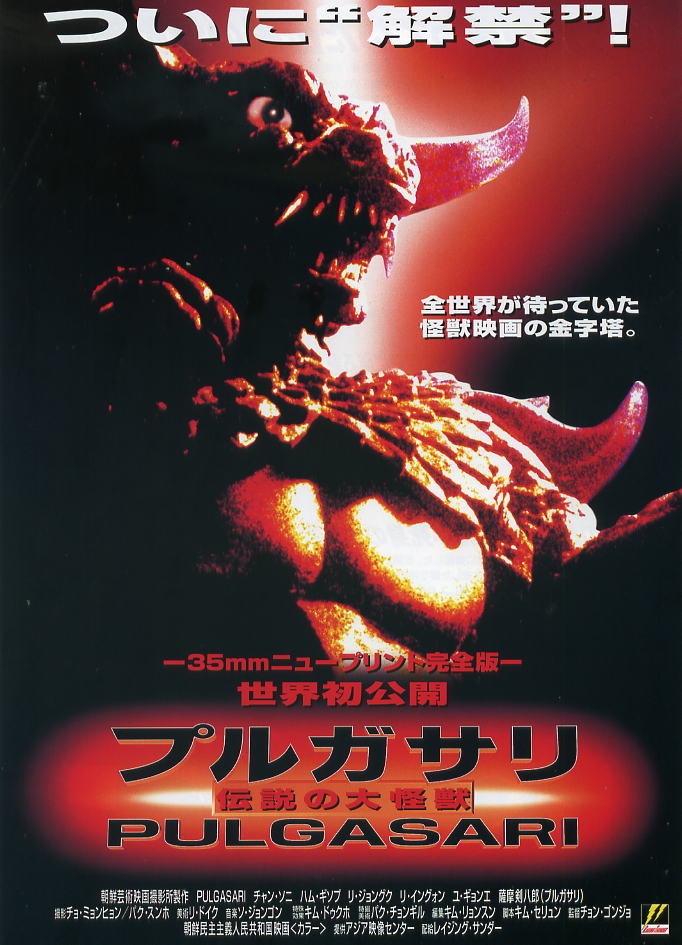
Synopsis
During the Goryeo dynasty (918-1392) of feudal Korea, under the King’s (Pak Yong-hok) harsh rule, his people were subjected to misery and starvation. A local blacksmith (Ri Gwong) is imprisoned for trying to protect his people and, whilst imprisoned, makes a statue of a monster out of his last meal and calls upon the Earth and Sky gods for his creation to come to life and protect the peasants and rebels fighting the king’s army.
After the statue comes into contact with the blacksmith’s daughter’s (Ri Jong-uk) blood, it transforms into a giant, iron eating monster known as Pulgasari. As the populace decide to unite in revolt against this tyranny, Pulgasari aids their struggle against the king to overthrow the monarchy but its never-ending hunger soon becomes a problem for them. As the peasant’s hand over their metal tools for working the land to try and stem the beast’s eternal appetite, the blacksmith’s daughter realizes she must use her blood to destroy the monster in order to save the people once again.
Making and Controversy
Although the film is based on ancient Korean folklore, the film is said to be propaganda against Western consumerism, the dangers of unchecked capitalism and the importance of the power of a collective and one’s role in said collective. Though it is speculated the director Shin Sang-ok left his message in the interpretation of the film, the monster being Kim Il-sung, leader of North Korea at the time, using an uprising for his own personal benefit.
This film is controversial through the means that its director was ‘hired’. In 1978, North Korean intelligence agents kidnapped Shin Sang-ok‘s then ex-wife, actress Chio Eun-hee, in January 1978 on the orders of Kim Jong Il, then director of the Motion Picture and Arts Division of the Propaganda and Agitation Department, whilst in Hong Kong after she was offered a lucrative film role. Six months later, Shin was also kidnapped whilst in Hong Kong searching for her. Sung was kept unaware that Choi had been captured by North Korean agents and, after two failed escape attempts was subjugated to a prison sentence. After his release he was finally reunited with Choi at a dinner party March, 1982.
Kim Jong-il expressed that he wanted Shin to direct a film to enter in an international competition, knowing that the strong internal propaganda of his own films does not have the same appeal to an international audience, allowing Shin to take a more open approach to different subjects to garner spots in worldwide competitions. Some years later whilst on a trip to Vienna, under the pretense of finding a financial backer for Kim’s latest film, the pair managed to inform the US embassy that they were under duress and seeking asylum. They managed to lose their caretakers and make it to the embassy, ending their ordeal in March 1986.
Before their escape, Shin and Choi made a total of six films for Kim Jong-il, An Emissary of No Return (Doraoji annun milsa, 1984), Love, Love, My Love (Sarang sarang nae sarang, 1984), Runaway (Talchulgi, 1984), Salt (Sogum, 1985), The Tale of Shim Chong (Simcheongjeon, 1985) and their final film being Pulgasari (1985) which is said to have had the biggest budget. The special effects were done by the same Toho staff that worked on the Godzilla films, being tricked into thinking they were filming in China for an unrelated company.
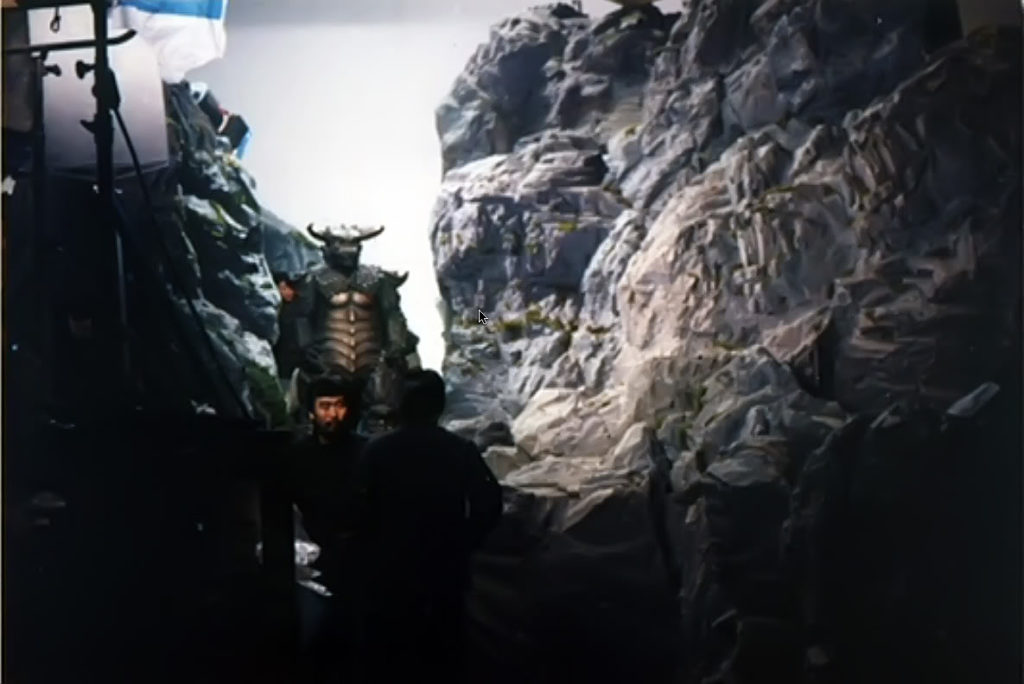
The Film was released by Korean Film Studio in North Korea in 1985 but did receive an international release, being released in 1998 in Japan, 2000 in South Korea and had a US cinema release in New York as part of Columbia University Japanese culture center’s year-long “Godzilla” festival in 2006, having a DVD release later in 2016.
General Thoughts
The film is beautifully shot with great use of colour, amazing set designs, and its soundtrack, portraying the struggle of the people very well. The special effects are very well done for the time and hold up very well by today’s standards with great character acting by Kenpachirô Satsuma, who started playing Godzilla in 1979’s Godzilla v’s The Smog Monster. It has great pacing, never seeming to slow down for story like other Kaiju films of the time, with huge medieval battle scenes against the Kaiju is a nice change to the usual formula. Though at times it seems like a family film, it has graphic depictions of peasants being beaten and tortured, capital punishment and actual animal remains that would suggest otherwise.
The film could have been just another obscure non-Japanese Kaiju film such as Yonggary (1967) from South Korea or Gorgo (1961) from UK/US but it has carved its own path as a unique and very enjoyable film and having gained a lot of attention over the years due to the shocking story of Shin and Choi’s eight-year detention really helped spread its reach to all over the world.
If you are a fan of Kaiju films, I would make some time to sit down and enjoy. This film is fully available to watch on YouTube for free with English subs. Which you can watch below!
More Reviews:
Echoes from the Grave Film Review – Modern Retellings of the Classic Works of Poe
I’m sure in one way or another, everyone is at least somewhat familiar with the works of Edgar Allen Poe. From the plethora of film adaptations as well as their…
Homebound (2021) Film Review – Family Secrets Can be Deadly
Meeting your partner’s family for the first time can be a drag, having to find out how well you get along in the family dynamic or learn some truths you…
Disappear Completely (2022) Film Review – The Horror of Losing Oneself
Santiago Mendoza (Harold Torres) is a successful tabloid crime photographer in Mexico City, who has developed a hard exterior in order to deal with the extreme violence he photographs. One…
TADFF 2023 Canadian Short Film Feature [Toronto After Dark Film Festival]
In addition to those that played ahead of the main features, the Toronto After Dark Film Festival screened eight more Canadian shorts in a dedicated showcase. From rotoscope animation to…
Savageland (2015) Film Review – The Camera Doesn’t Lie
The found-footage subgenre of horror is probably the most threadbare of its kind. The cinematic possibilities and the amount of legroom where a creative might pull a stunt out of…
Stacy: Attack of the Schoolgirl Zombies (2001) – Film Review and Retrospective
For the length of time that zombie movies have been a part of horror, it is only natural that the subgenre would eventually go stale, occasionally requiring a total re-evaluation…

Hey there, I’m Jim and I’m located in London, UK. I am a Writer and Managing Director here at Grimoire of Horror. A lifelong love of horror and writing has led me down this rabbit hole, allowing me to meet many amazing people and experience some truly original artwork. I specialise in world cinema, manga/graphic novels, and video games but will sometime traverse into the unknown in search of adventure.

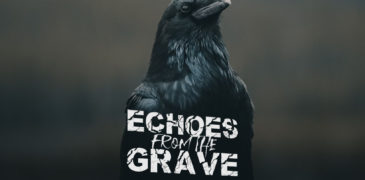

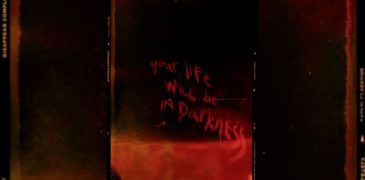
![TADFF 2023 Canadian Short Film Feature [Toronto After Dark Film Festival]](https://www.grimoireofhorror.com/wp-content/uploads/2023/10/Untitled-design-18-365x180.jpg)
